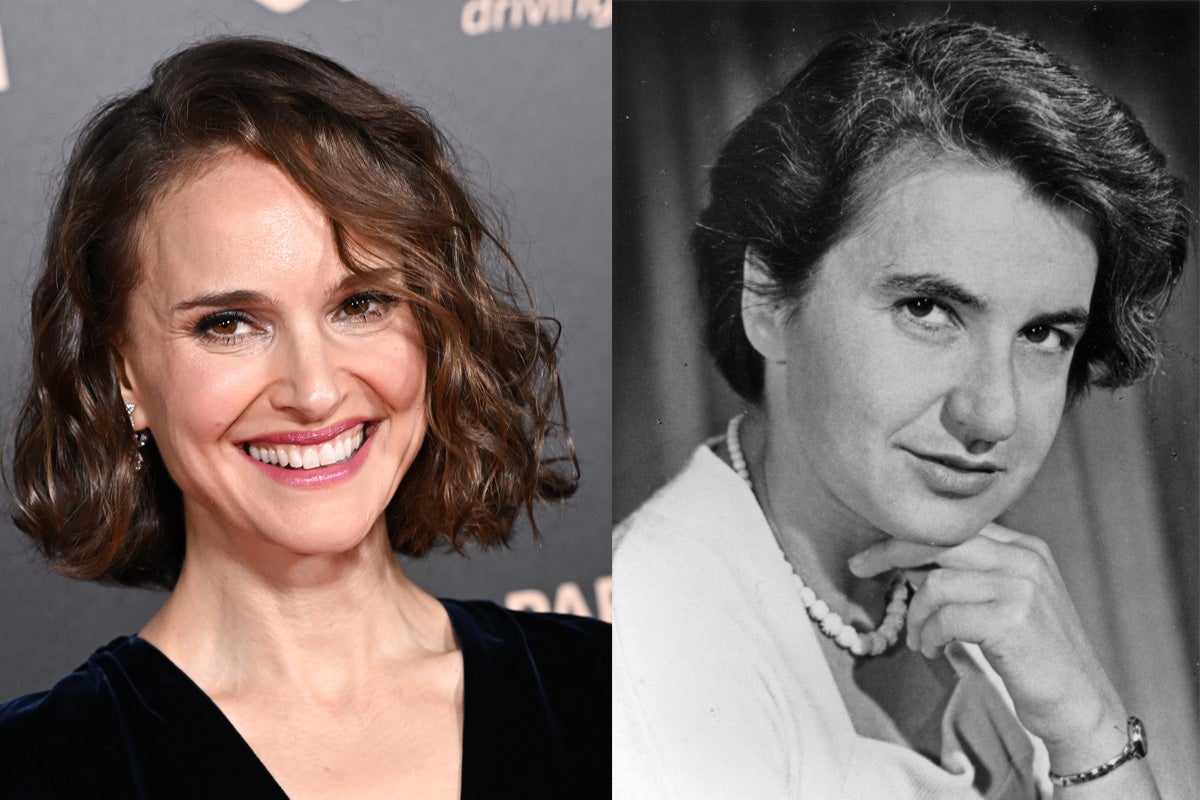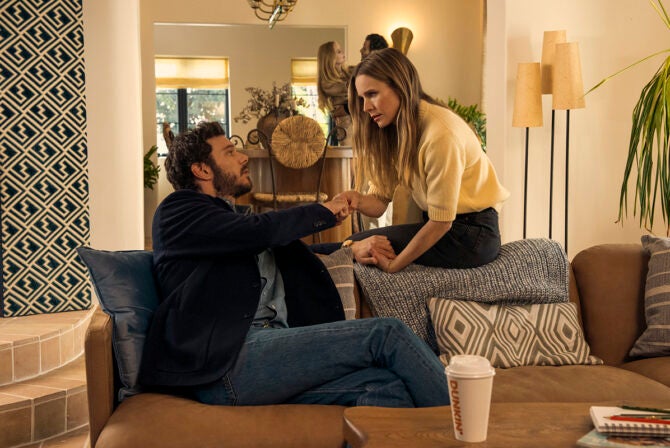Natalie Portman has played many a historic woman, from Anne Boleyn to Jackie Kennedy, but now for the first time she’ll be playing a Jewish one: Rosalind Franklin. The Jewish British scientist’s work was vital to the discovery of the structure of DNA, but she may have remained unknown if it weren’t for those who, after her death, shed light on the way her discoveries were co-opted and minimized by the men around her.
Portman, born Natalie Hershlag in Israel, is known for a wide variety of roles. From her Academy Award-winning role in “Black Swan,” to her performance as Padmé Amidala in “Star Wars” and as Jane Foster in “Thor,” to her role as Amos Oz’s mother in her directorial debut “A Tale of Love and Darkness,” and recently as a complex and ever-so-compelling Jewish mother in “Lady in the Lake.” It definitely looks like she’s leaning into her Jewish identity in recent roles.
This new movie will be helmed by Tom Hooper, the director behind biopics like “The Danish Girl” and “The King’s Speech.” Hooper directed “Cats” and “Les Misérables” too, and this new project is also an adaptation of a play (though not a musical): “Photograph 51,” written by Anna Ziegler, who will also be adapting her script to the big screen.
The West End play, which starred Nicole Kidman, is named after the famous photo taken by Franklin using X-ray crystallography, a photo that revealed more clearly than ever before DNA’s double-helix structure. James Watson and Francis Crick, the scientists who won the Nobel Prize for that discovery, used Franklin’s photo and data — shown to them without her explicit permission — for their findings. Yet when they, along with Maurice Wilkins, Franklin’s disgruntled colleague from London’s King’s College who showed them the photograph and helped them discover the reports she co-authored, were awarded the Nobel Prize in 1962, neither mentioned her. In his 1968 book “The Double Helix,” where Watson credits Franklin’s contributions in the most overt way he had until then, he writes a cruel and sexist portrait of the scientist whose work changed his professional trajectory. (He later amended his reflection on her in an epilogue.)
Franklin died in 1958 of ovarian cancer, and at the time, the Nobel Prize could not be awarded posthumously — even if properly credited, she couldn’t have received the honor. But it took decades for people to acknowledge how instrumental Rosalind Franklin was to the discovery, and what an outstanding historical figure she is.
Franklin was the daughter of an affluent British Jewish family. In her grandfather’s country home, the Hebrew words “ahavat hager,” “welcome the stranger,” hung above the gate. This was a motto that very much embodied the ideals of their Jewish British family, who made their fortune through banking and publishing, Rosalind’s niece said. Charity work was important for the Franklin family — during WWII they even took in two Jewish refugees. And during her college studies in the sciences, Franklin would spend her summers volunteering at German-Jewish Refugee Committee at Woburn House.
The Franklin dinner table conversations were where Franklin developed a penchant for debate, even arguing with her assertive father, Ellis. Wilkins didn’t get along with Franklin because she liked to challenge and have her ideas challenged, enjoyed boisterous conversations and confrontation. One of five children, including three brothers, she enjoyed spending time with the boys taking part in outdoorsy pastimes, as well as drawing, reading, photography and building things. All these skills would later play a big part in her career. While working on her Ph.D., she worked in the British Coal Utilization Research Association, aiding the war effort and writing seminal and oft-quoted papers on the subject. She then spent years in Paris working for Jacques Méring at the Laboratoire Central des Services Chimiques de l’État where she became proficient in X-ray diffraction techniques, skills she would later use for her work on DNA.
In England, Franklin inured herself to the resistance of men, building a career based on her passion for science, even among men who did not support women being their peers. At King’s College, where she worked, women still weren’t allowed in one of the dining halls for faculty and research staff, the Senior Common Room, something that greatly angered Franklin.
Sexism and antisemitism all had deep implications on Franklin’s career, as “Photograph 51” illustrates. Both Wilkins, who insisted on being called Dr. Wilkins, and later Watson called used the moniker “Rosy” for her. The tongue-in-cheek nickname both disrespected her education and credentials, and alluded to how not soft and not feminine she was — not “Rosy.” This nickname was also an also to the preconceptions around Jewish women as less attractive, less feminine, more stern and “ornery.” Franklin eventually left the college for Birkbeck College in London.
While Rosalind was stern, serious and sometimes abrasive when it came to work — understandable, perhaps — she was beloved by her friends and peers in her personal life. She loved the outdoors, hiking and traveling, though she didn’t much like traveling in the style of the upper class. Despite being dubbed the “Sylvia Plath of molecular biology,” it seems that Franklin was, as a person and friend, great fun.
Aside from a love of science, a Jewish value was at the center of Rosalind’s work, her niece asserts — that of tikkun olam. More than fame and glory, Franklin cared for science and its advancements. Her research and discoveries — when it came to DNA and then later on TMV (Tobacco Mosaic Virus) and RNA, which she studied and wrote papers on after leaving King’s College until her death in 1958 — were all in the service of bettering the world of medicine and helping countless people through their practical implications. And Franklin certainly has made the world a better place. It’ll be amazing to see Natalie Portman, one of the most respected and beloved Jewish actresses of our time, play her on screen.








